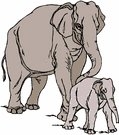
Worksheets and No Prep Teaching Resources
Reading Comprehension Worksheets
Animal Themes
Invertebrates
Oceans

Animal Themes
 Worksheets and No Prep Teaching Resources Reading Comprehension Worksheets Animal Themes Invertebrates Oceans |
 Animal Themes |
| edHelper's suggested reading level: | grades 6 to 8 | |
| Flesch-Kincaid grade level: | 7.88 |
| Bristle Worms |

|
 1 Bristle worms are close relatives of earthworms. They both belong to the same invertebrate phylum of annelids or segmented worms, albeit in two separate classes. Bristle worms make up the class of polychaeta, whereas earthworms form the class of clitellata. With over 8,000 species, polychaeta is, in fact, the biggest class in the phylum.
1 Bristle worms are close relatives of earthworms. They both belong to the same invertebrate phylum of annelids or segmented worms, albeit in two separate classes. Bristle worms make up the class of polychaeta, whereas earthworms form the class of clitellata. With over 8,000 species, polychaeta is, in fact, the biggest class in the phylum. |
Create Weekly Reading Books
Prepare for an entire week at once! |
| Leave your feedback on Bristle Worms (use this link if you found an error in the story) |
 |
Animal Themes
|
 |
Invertebrates
|
 |
Oceans
|
|
|